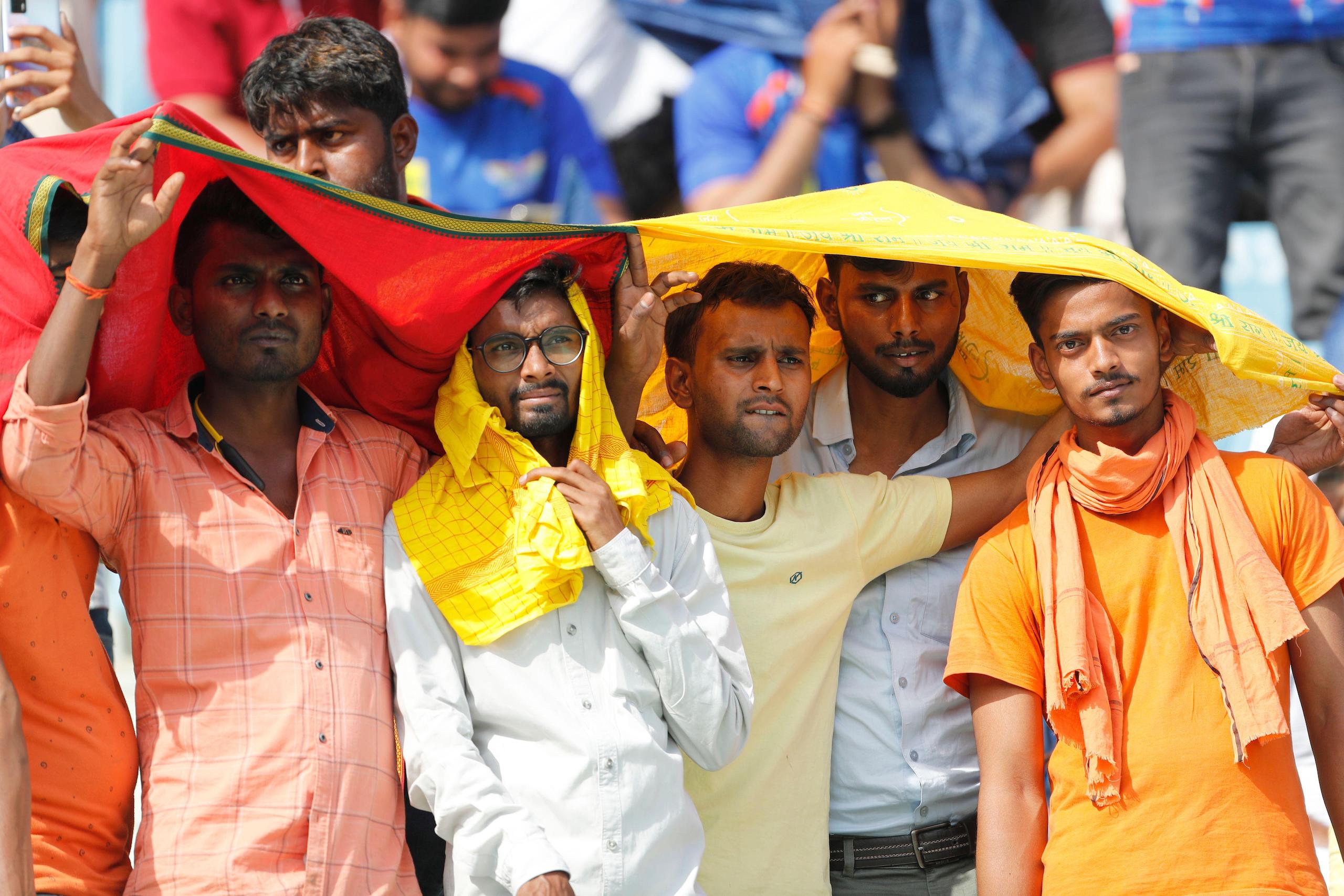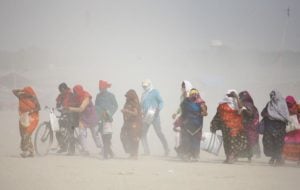The cricket world watched in awe on 7 November as Australia’s Glenn Maxwell made history. While playing Afghanistan during the International Cricket Council (ICC) Men’s Cricket World Cup, the batsman became the first Australian man to achieve a double century in a one-day international match. This is especially impressive considering Maxwell collapsed in the middle of his innings, his body spasming from debilitating muscle cramps.
It was a humid evening at Mumbai’s Wankhede stadium, where the match took place. “I haven’t really done a whole lot of high-intensity exercise in the heat. It certainly got a hold of me today,” Maxwell said later.
That day, Mumbai recorded a temperature high of 34C and 84% humidity levels. Commentators remarked that it was one of the hottest days of the tournament.
When the outside temperature is hot and humid, just perspiration is not enough to cool down the body since there is no evaporation of sweatAbhiyant Tiwari, consultant at India’s Natural Resources Defense Council
“When the outside temperature is hot and humid, just perspiration is not enough to cool down the body since there is no evaporation of sweat,” says Abhiyant Tiwari, lead climate resilience and health consultant at India’s Natural Resources Defense Council.
With reports forecasting the continuation of South Asia’s extreme humid heat events thanks largely to climate change, experts are questioning the future of sports in such challenging conditions.
“Because of the heat [in India], there were more cases of cramps and dehydration [at this year’s Cricket World Cup] than usual,” says CS Suresh Kumar, a former batting coach of the National Cricket Academy. “The hot weather combined with humidity meant that [the players] lost more salt … causing cramps.”
Cricketers face the heat
During the tournament’s Australia v India match at Chennai’s Chepauk stadium on 8 October, the temperature reached 33C and humidity in the evening peaked at 88%. As cited in the 2019 report “Hit for Six: The Impact of Climate Change on Cricket”, the American College of Sports Medicine recommends halting continuous exercise long before these conditions are reached: a hot, still and sunny day of 30C and 35% humidity is the college’s “black flag” threshold, at which point sporting events should be cancelled.
The New Zealand batsman Rachin Ravindra tells The Third Pole about his own experience of Chennai during October. As part of a UNICEF programme promoting gender equality in sports, Ravindra and his teammates played cricket for an hour with school children at Chepauk stadium: “When I play back home in New Zealand, I may not even sweat a little bit. But out here we were just playing with some kids for a bit and I am drenched. It is definitely a challenge.”
While India played New Zealand at the tournament’s semi-final in Ahmedabad, Gujarat on 15 November, Virat Kohli and Shubman Gill from the home team also suffered cramps: Gill was forced to leave the field and rest before he took to the bat again; Kohli skipped the first two practices that followed the semi-final to recover.
“When there is extreme humidity, the air tends to become thicker and it feels like you are moving through a steam bath, making it difficult to move and breathe,” says Sai Venkata Sarath Chandra, a climate and heat health research associate for the Indian Institute of Technology. “You are told to get out after 20 minutes from a steam bath, but in these matches there is no way out.”
Delayed adaptation
The “Hit for Six” report combines climate science and heat physiology to outline how increasing temperatures and frequent heatwaves are changing the sport. Such conditions make players more susceptible to poorer performance, increase the chances of match delays and make heat exhaustion and heat stroke more likely among participants.
Regarding the specific demands of cricket on the human body, the report says: “a day at the crease can be compared to running a marathon wearing helmet, gloves and pads. And when air temperature is higher than skin temperature – typically around 33-35C – only sweat can stop the body heating up. Protective clothing and high humidity make this less effective.”
While cricket may not be the most physically intense game that is played in high temperatures, it is one of the longest. But despite the physiological challenges of playing in extreme heat and humidity, players are often pushed to continue on the field.
When Cricket Australia’s physiotherapist Nick Jones rushed to the field and attempted to help loosen Maxwell’s muscles on 7 November, the batsman told Jones he needed a break from the match. But it was later reported that Jones advised against this, because removing Maxwell and cooling him down in those conditions would have made it physiologically impossible for the batsman to rejoin.
The future of cricket
As of 6 December, 2023 is set to be one of India’s hottest years on record. October 2023 was India’s third-warmest October ever and ended with below-normal rainfall in several parts of the country.
Studies show that the frequency of days in India combining extreme heat and extreme air pollution could increase by 175% by 2050 if there is little reduction in humanity’s greenhouse gas emissions. This could mean roughly 78 such days per year.
In 2018, Cricket Australia launched its heat policy to combat the effects of climate change on the game and its players. The policy includes a heat-stress risk index, which can be used to decide whether play should proceed as normal or not. It also offers guidelines on how to manage and treat illness induced by heat stress.
Cricket’s future in India depends on acknowledging and addressing the heat challenges presented by climateAnjal Prakash, IPCC author and public policy researcher
In November, The England and Wales Cricket Board released a game-wide sustainability strategy. Similarly, it includes guidance on protecting players, spectators, volunteers and employees from extreme heat while ensuring safe gameplay.
However, other boards including the ICC and the Board of Council for Cricket in India have been slow to follow suit.
“Cricket and climate change are becoming intertwined concerns and the Indian Cricket Council’s inaction is concerning,” says Anjal Prakash. “Even players claiming to handle rising temperatures are underestimating the long-term risks.” Prakash is an author for the Intergovernmental Panel on Climate Change and an associate professor at the Bharti Institute of Public Policy. “Cricket’s future in India depends on acknowledging and addressing the heat challenges presented by climate,” he adds.
The Third Pole speaks to Daren Ganga, a former West Indies cricket captain who now studies the impact of climate change on sport in affiliation with the University of the West Indies. He says practical solutions can be adopted: “Acclimatisation to extreme weather requires time, which is not offered in big tournaments. So, there must be adequate hydration options, more drink breaks, in-stadium cooling facilities, player jerseys made of breathable materials and, importantly, the option to postpone matches based on the heat.”
Ganga points to the cancellation of 2019’s New York City Triathlon and multiple match postponements during the Australian Open tennis tournament this year, all due to extreme weather. By contrast, Ganga says, “cricket continues to remain in denial of the effects of global warming and climate change.”









